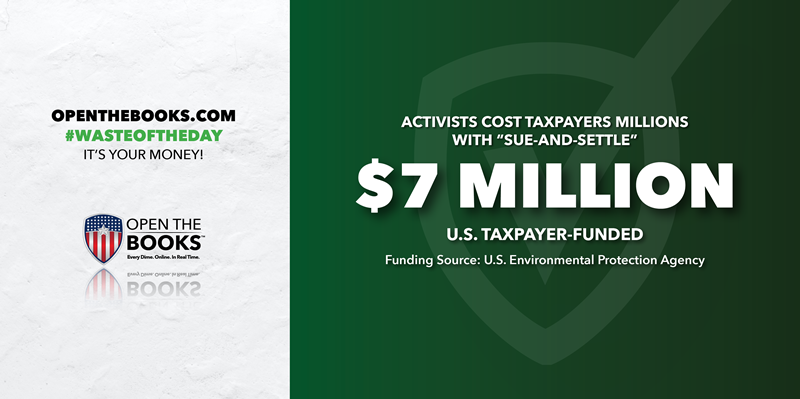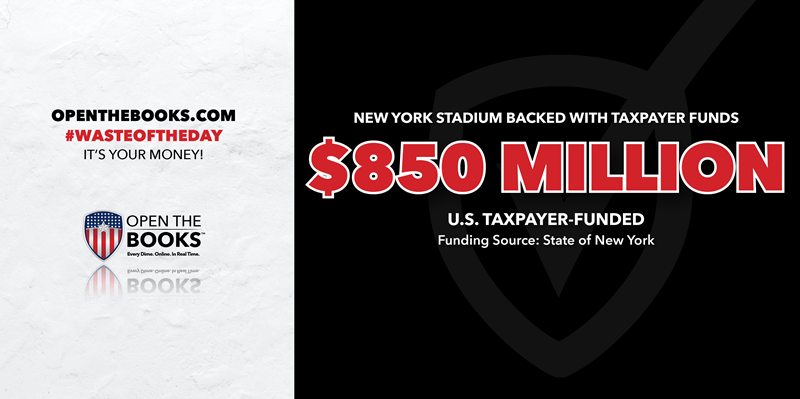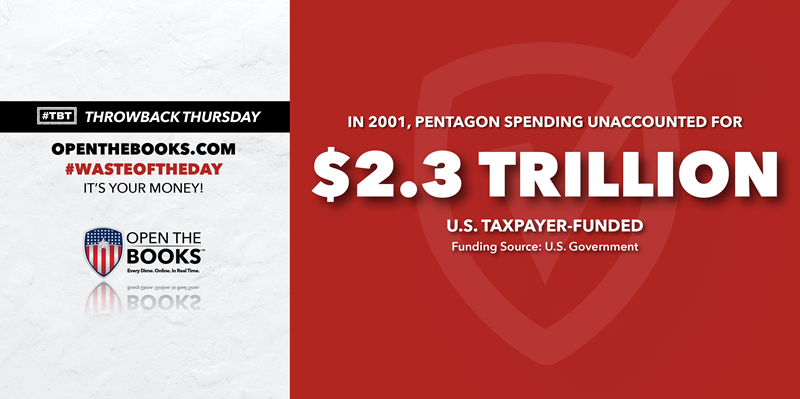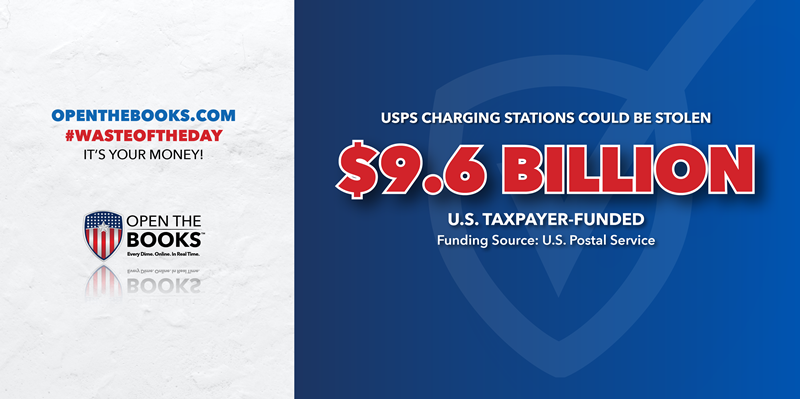
Biden Admin Spends Six Times More on “Sue-And-Settle” Than Trump
January 22, 2024

Topline: President Joe Biden’s administration has already spent more than $7 million on “sue-and-settle” attorney fees, twice as much as former President Donald Trump’s White House spent in an entire four-year term.
Key facts: “Sue-and-settle” describes instances where a private party sues a government agency, but a settlement is reached outside of court.
Critics say the technique allows the Environmental Protection Agency to create policy through these settlements without Congressional approval, and wastes taxpayer money on litigation.
The government often covers costs for environmental nonprofits suing the EPA, using taxpayer money. In extreme instances, the government spends almost $500,000 on a single case.
“Sue-and-settle” also lets the EPA make decisions about how a particular regulation should be enforced without asking Congress, which former EPA Administrator Scott Pruit described as “collusion.”
Auditors at OpenTheBooks.com found that in just two years, Biden’s administration has already spent more on “sue-and-settle” than any other recent president.
Biden’s administration paid out $3.3 million in litigation fees during its first year. That’s six times more than Trump’s administration spent in its first year, and nearly as much as the $3.6 million spent during Trump’s entire term.
Background: Rather than curb litigation spending, EPA Administrator Michael S. Regan issued a memorandum in March 2022 that eliminated many Trump-era EPA policies designed to reduce “sue-and-settle.” The government went on to spend $3.6 million in attorney fees in 2022.
The increase in attorney fees under Biden is consistent with the change between the George W. Bush and Barack Obama administrations. “Sue-and-settle” was used 77 times during Obama’s second term, compared to 28 times in Bush’s second term.
That cost the Obama administration $5.8 million, a number that Biden’s EPA surpassed in just two years. It also allowed the EPA to create 100 new regulations without Congressional oversight, according to the U.S. Chamber of Commerce.
Reps. Pat Fallon (R-TX) and James Comer (R-KY) sent a letter to Regan on Nov. 14, 2023, requesting documents for an investigation into potential abuses of the policy.
Critical quote: “On March 28, 2022, [Regan] revoked a policy designed to protect the American taxpayer from … sue-and-settle consent decrees and settlement agreements,” Fallon and Comer wrote in their letter. “Because of your action, sue-and-settle abuses appear to have proliferated at the Biden Administration EPA. Sue-and-settle litigation has plagued the federal regulatory system for decades, allowing special interest groups to dictate federal policy through lawsuits without adherence to normal regulatory processes.”
Summary: Biden’s first term as president is ending, but “sue-and-settle” techniques could continue being employed in his potential second term. It remains to be seen whether oversight such as Fallon and Comer’s will force the EPA to change its policies.
$850 Million in Taxes Will Go to New Buffalo Bills Stadium
January 23, 2024

Topline: The Buffalo Bills broke ground on a $1.6 billion new stadium last June, and New York taxpayers are on the hook for $850 million of those funds, the largest-ever public investment in an NFL stadium.
Key facts: The Bills’ new stadium is funded in part by $600 million in New York state taxpayer money and $250 million directly from Erie County, where it’s located.
The price tag tops the record $750 million in taxpayer funds the Las Vegas Raiders used to build their stadium in 2020.
While 61% of the Bills’ stadium is being paid for by the public, Gov. Kathy Hochul says is a low rate relative to other NFL teams. The Bills’ current stadium was entirely financed by taxpayers in 1973.
Renovating the Bills’ current home of Highmark Stadium would have cost $862 million, which the Bills and the state agreed was inefficient.
Hochul, a Buffalo native, says the Bills bring in $350 million to the Buffalo area every year and that the stadium will create 10,000 jobs. She also said the team generates $27 million in annual taxes.
Background: Auditors at OpenTheBooks.com found that Erie County’s investment of $250 million is three-quarters of what the county paid to all vendors in 2021 ($326 million).
The $650 million in state taxes being used for the stadium is more than two-thirds the $910 million the state used to finance the Buffalo City School District in 2022.
The new stadium does not include a roof, despite frequent snowfall during football season, which was one of the main criticisms of the Bills’ old stadium.
However, 80% of the new seats are weather protected.
The deal does include language allowing New York to sue the Bills for the entire cost of the stadium if they try and relocate the franchise within the next 30 years.
The initial proposal drew backlash because Hochul’s husband, William, was employed by Delaware North, which runs concession stands at the Bills’ stadium. William Hochul resigned from Delaware North last August.
Supporting quote: “I’m pleased that after months of negotiations, we’ve come out with the best answers possible,” Hochul said. “The Bills will stay in Buffalo for another 30 years, the project will create 10,000 union jobs and New Yorkers can rest assured that their investment will be recouped by the economic activity the team generates.”
Summary: There’s no denying that the Bills are important to Buffalo’s economy, especially during their current run of five straight playoff appearances. However, taxpayers are now paying a large price to keep the franchise in New York.
Covid Lending Program Has $257 Million In Losses
January 24, 2024

Topline: A federal Covid-era lending program faces millions in losses, with past-due payments growing as small business borrowers face increased interest payments on the variable rate loans.
Key Facts: As of Sept. 30, 2023, the federal Main Street Lending Program had $257 million in actual loan losses, according to a U.S. Government Accountability Office report.
Since interest payments began in August 2021, most borrowers have been making them on time.
However, the rate of past-due payments increased to about 7.6 percent in August 2023 and could remain higher than average as borrowers face increased interest payments as variable rates on Main Street loans have risen.
The GAO found that 610 loans (or about 33%) had been fully repaid, and 45 loans (or about 2.5 percent) had recorded losses.
Background: Responding to the Covid-19 pandemic, the Federal Reserve System Board of Governors authorized 13 emergency lending programs for certain parts of the economy, including businesses and employers.
The Main Street Lending Program was for small and mid-sized businesses and nonprofits and ended on Jan. 8, 2021. The Federal Reserve implemented the emergency lending program to mitigate disruptions in credit for large and small businesses, as well as state and local governments, as a result of the pandemic.
The program provided loan for employers who had been in good financial standing prior to the onset of the pandemic. Employers who took the loans must have made “reasonable efforts to maintain payroll and retain workers.”
Larger businesses make up a large portion of the fully repaid loans, while loans with losses were proportionally higher for smaller businesses. For example, businesses that had 2019 gross revenue of $7.7 million or more accounted for the majority of fully repaid loans, as of August 2023. \
Critical Quote: “Small businesses’ access to credit has decreased since 2022, as banks have tightened credit standards in response to a less positive economic outlook and industry-specific problems,” the GAO said in its report.
“The Federal Reserve implemented the emergency lending facilities to mitigate disruptions in credit markets for large and small businesses, as well as state and local governments, as a result of the COVID-19 pandemic. We found that since the termination of the facilities, while uncertainties exist in credit markets, near-term default risks in the markets the facilities operated in appear to be low, as vulnerabilities also remain low.”
Summary: A program intended to help small and medium-size businesses during the pandemic may have been created out of relative goodwill but the variable rates on the loans will be no friend to the businesses that must pay them back.
Throwback Thursday: Sept. 10, 2001 And The Pentagon’s Forgotten $2.3 Trillion
January 25, 2024

Throwback Thursday!
Topline: On Sept. 10, 2001, then-Defense Secretary Donald H. Rumsfeld promised to end what he called “a matter of life and death” — billions of dollars of wasteful spending at the Pentagon, and an unaccounted for $2.3 trillion.
Rumsfeld’s battle was short-lived. By the next day, on 9/11, the Department of Defense had bigger things to worry about than wasteful spending.
So, what became of Rumsfeld’s declaration of financial war?
Key facts: In a press conference on Sept. 10, Rumsfeld admitted that because of outdated technology and flawed bookkeeping, Pentagon accountants had lost track of $2.3 trillion in taxpayer money. That was almost a quarter of the United States’ GDP at the time.
The funds had been spent, but no one could figure out what they had been used for. This would have been a huge national story, if not for the events of the next day.
Rumsfeld likened Pentagon bureaucratic processes to the Soviet Union in terms of the threat they posed to the U.S. He also noted that the DoD employed more workers than necessary and spent millions of dollars to train staffers who would only stick around for a few years.
Rumsfeld vowed to revolutionize Pentagon accounting, work with Congress to draft new legislation, and created the Defense Business Board to advise the DoD on financial matters.
Background: Jim Minnery of the Defense Finance and Accounting Service told CBS News in 2002 that few Pentagon employees seemed to care about multi-million dollar transactions missing from internal balance sheets. Officials would simply doctor statements to erase the missing money, according to Minnery.
"They have to cover it up," Minnery said. "That's where the corruption comes in. They have to cover up the fact that they can't do the job.
Even the Pentagon’s attempts to fix its accounting ended up wasting money. Rolling Stone reported in 2019 that two different Pentagon accounting initiatives had been scrapped. Each cost over $1 billion and took over seven years to prepare, yet were never even implemented.
In 2023, the Pentagon’s accounting systems failed an internal audit for the sixth year in a row. That prompted Sens. Chuck Grassley (R-Iowa) and Bernie Sanders (I-Vt.) to introduce the Audit the Pentagon Act of 2023, which would force the DoD to forfeit part of its budget if it could not pass another audit.
Auditors at OpenTheBooks.com found that the Pentagon spent more than $56 billion on payroll in 2022. There were 24 employees who took home salaries of at least $300,000.
Critical quote: “From buying $14,000 toilet seats to losing track of warehouses full of spare parts, the Department of Defense has been plagued by wasteful spending for decades. Every dollar the Pentagon squanders is a dollar not used to support service members, bolster national security or strengthen military readiness,”Grassley said. “The Department of Defense should have to meet the same annual auditing standards as every other agency.”
Summary: The DoD has had a known finance issue for decades despite being one of the government’s most expensive departments. The worries Rumsfeld brought up in 2001 have yet to be eliminated.
USPS Spending $9.6 Billion on EVs, but Charging Stations at Risk Of Theft
January 26, 2024

Topline: The U.S. Postal Service is investing $9.6 billion in electrifying its delivery fleet, including procuring charging stations.
While the Postal Service completed tests and conducted other performance monitoring of the charging stations, not enough testing was done to safeguard those assets, according to a recent audit from the USPS Office of Inspector General.
Key Facts: The report found that the Postal Service conducted effective contract oversight to verify that charging stations conformed to certain requirements identified in the contracts’ statement of work, and conducted performance monitoring to evaluate the charging stations’ short-term reliability
But it found the USPS didn’t conduct long-term performance monitoring, test with Next Generation Delivery Vehicles, or test the lifespan of the charging stations.
It also found there weren’t effective management controls over the storage of charging stations. “Specifically, facility management did not employ necessary physical safety measures designed to protect and deter the theft of assets.”
Background: The inspector general’s staff wanted to determine whether the Postal Service was effectively testing performance, storing and monitoring charging stations.
They observed testing at Vienna, Virginia, conducted site observations and interviews at the MDC in Kansas; and reviewed related policies and procedures.
Facility management didn’t provide sufficient oversight or resolve security deficiencies in a timely manner, which contributed to the loss of $67,000 in assets, the report found.
The Postal Service is storing and dispersing charging stations from its Material Distribution Center (MDC) in Kansas.
The audit redacts the value of those charging stations that are considered at risk of theft until all the safeguards are implemented.
Critical Quote: “We recommended management take urgent action to finalize and implement the plan for physically safeguarding assets stored at the MDC.”
Summary: If a federal agency is going to spend almost $10 billion on elective vehicles and charging stations, it should do so carefully, and at the very least, ensure they’re not at risk of being stolen.
The #WasteOfTheDay is presented by the forensic auditors at OpenTheBooks.com.